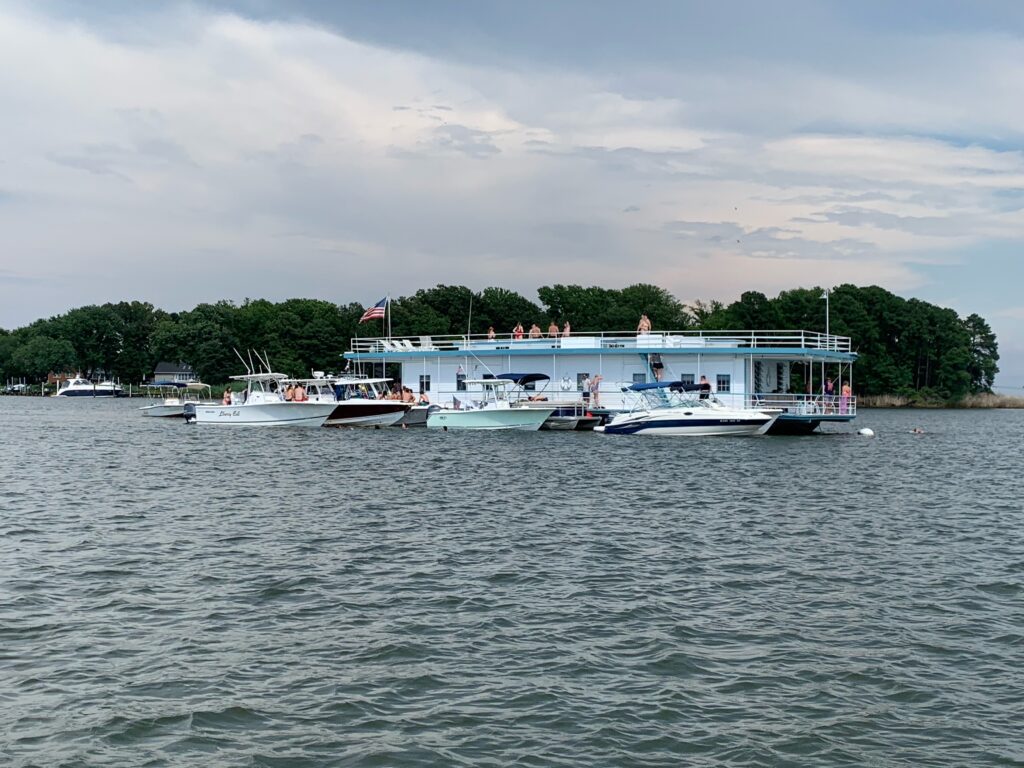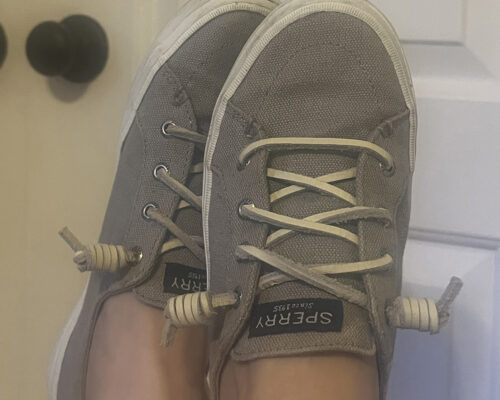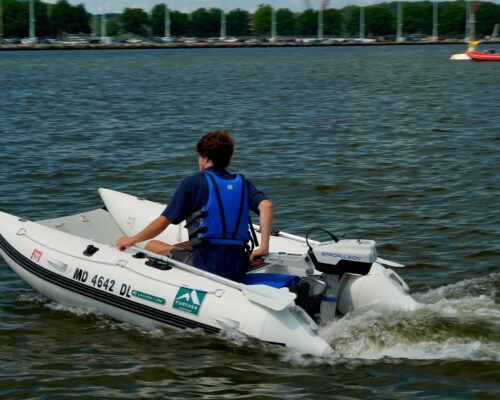For as long as I can remember, my family took “creek crawls” on our powerboat—zipping from our pier at the top of the Magothy River to meander through the river’s various creeks and coves at sunset. One of our favorite spots was Gibson Island, which forms the northern boundary of the Magothy’s mouth.
An exclusive, gated community whose singular zip code is among the nation’s richest, Gibson Island had beautiful and interesting boats on its moorings during any summer evening. On our creek crawls, we’d cruise at slow speeds to check out all the shining teak in the harbor.
One vessel that always struck me as an outlier: a large, blue and white houseboat barge. It had been in the harbor for as long as I could remember. The quirky, 83-foot-long vessel was an anomaly among the other boats. What was it doing there, and who did it belong to?
The answers weren’t what I expected. It turns out the houseboat known as Lone Star is owned by two sisters in their sixties. She was built way back in 1929 with an all-wood hull. And that hull, badly in need of saving, is what brought Lone Star‘s story to me in 2024.
The sisters, Nina Boykin Tracey and Rebel Boykin, are only the third owners of the 97-year-old Lone Star. The first was George Mackubin, a Baltimore investment banker who invested in Texas oil, and one of the founding members of the Gibson Island Club. He had his houseboat built solidly, to framing standards well above what today’s boatyards consider necessary.
The second owner was Tracey and Boykin’s father, William A. Boykin, who saw a great opportunity when the barge came up for sale in 1960. He took out a second mortgage to buy it from Mackubin for around $5,000. And when William Boykin passed away about 25 years ago, the two sisters bought out their siblings and kept Lone Star in the family to use as their private getaway.
Over the years since then, Tracey and Rebel Boykin’s own children have grown up visiting the houseboat and began bringing children of their own. Their fabulous summer spot is what Chesapeake dreams are made of, as detailed in Chesapeake Bay Magazine‘s 2019 feature story, The Aggressive Pursuit of Leisure.
Featured a few years ago on the reality TV show Extreme Houseboats, Lone Star boasts 4,400 square feet of living space, five bedrooms and two baths, and a 26-foot beam plus 3-foot-wide landing platforms to make it easy to walk around the barge. With a cottage-preppy aesthetic, the bedrooms are outfitted to sleep 14. There are lower decks at the bow and stern for entertaining (including crab picking) and a 2,000-square-foot upper deck used for lounging and cannonballing into the Magothy.
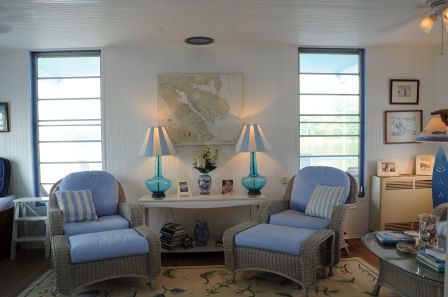
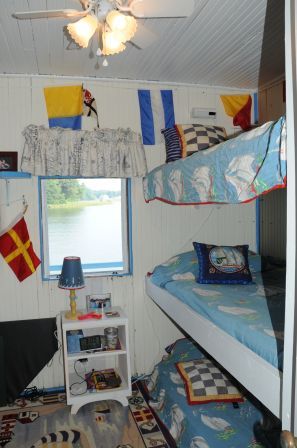
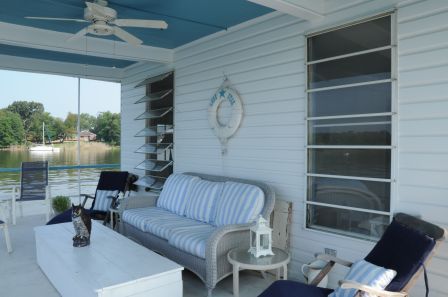
Lone Star has no engine, and isn’t a licensed boat. She must be towed to get anywhere. Her owners have gotten creative to operate the systems on board while at a mooring ball, with no pier power to speak of. “She lives off pumps, saltwater and freshwater, battery bank, and solar power,” Tracey says. The houseboat’s two refrigerators are powered by propane, inspired by the Amish. The family even uses an old-fashioned hand-crank ice crusher to make cocktails. The houseboat has always been for strictly recreational use by family and friends, though more than once, Tracey says, some hopeful boaters motored by asking if the barge was selling drinks.
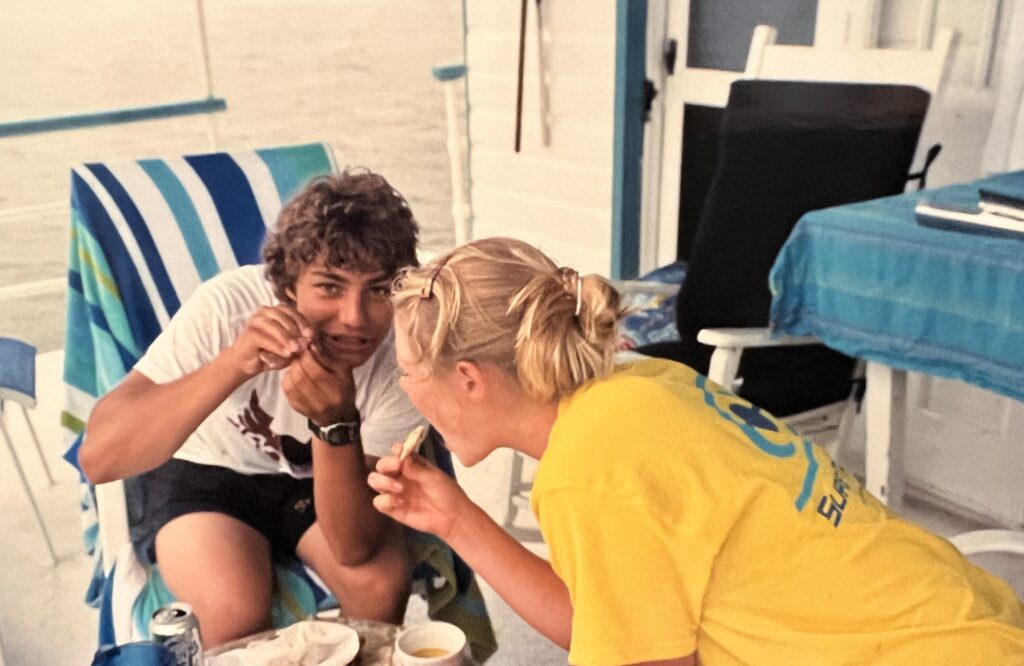
One memorable year, Tracey’s son Jock was set to graduate from the Naval Academy. The family towed the barge all the way to Annapolis, tying up alongside a waterfront construction site. All week, the water taxi picked up and dropped off family straight to the houseboat.
The Boykin/Tracey family just might have continued to make memories forever at their idyllic, multi-generational getaway, except for one problem: Lone Star‘s hull. Now with grown children, Tracey and her sister have realized it is time to “move into this century with her hull” and preserve the houseboat for the next generation. Truth be told, the hull has been hanging on by a thread for quite awhile.
The last time Lone Star was hauled was the year 2000, via the Yacht Maintenance Co.’s marine railway in Cambridge, Maryland. She had to be towed all the way there from Gibson Island. Since then, her wooden hull has, unsurprisingly, sprung some leaks. Faced with the difficult logistics of another haul-out, Tracey asked around for ideas of how to make the barge watertight while it remained in the water. An “old salt” who owned an old Navy barge gave Tracey the idea of wrapping the hull with what he called a “diaper”, made of a Neoprene-like rubber material.
Tracey tried it. She had a large length of the Neoprene rolled up on PVC pipe. A crew dove below the surface of the water to cinch the diaper around the hull of the boat, where it clung like a wetsuit to a diver’s skin. This quirky solution lasted a full seven or eight years, when finally its seams began to fail.
Tracey repeated the process, replacing the diaper with rubber whose seams were already melted together so they wouldn’t fail. It worked, but the wave action at the folds of the rubber diaper broke them open little by little. That’s when Tracey got serious about a long-term solution. She knew she had to haul Lone Star again and replace the hull, but she had trouble finding a boatyard willing to take on the unusual project. Putting the 83′-by-26′ rectangle on a lift or a railway would be a liability, made trickier because of the landing decks sticking out on both sides.
On a whim, Tracey reached out to Georgetown Yacht Haven on the Sassafras River. “I drove all the way there to meet in person,” she tells me, because she thought it was likely that the boatyard would turn her away if she simply explained her dilemma over the phone.
Georgetown did not turn her away. Tristan Price, COO of the marina, was intrigued by Lone Star‘s plight. “We always get somewhat unusual projects,” Price tells me. “We love a good challenge… the wilder, the better.”
Because of the age of the boat, “It took a long time to find some believers who were willing to give it a try,” Tracey says.
Price enlisted his resident surveyor, Fred Wise, who he calls a wealth of knowledge on wooden boats, and shipwright Mike Wilkinson, whose pedigree includes Baylis Boatworks and Duffy Boatworks.
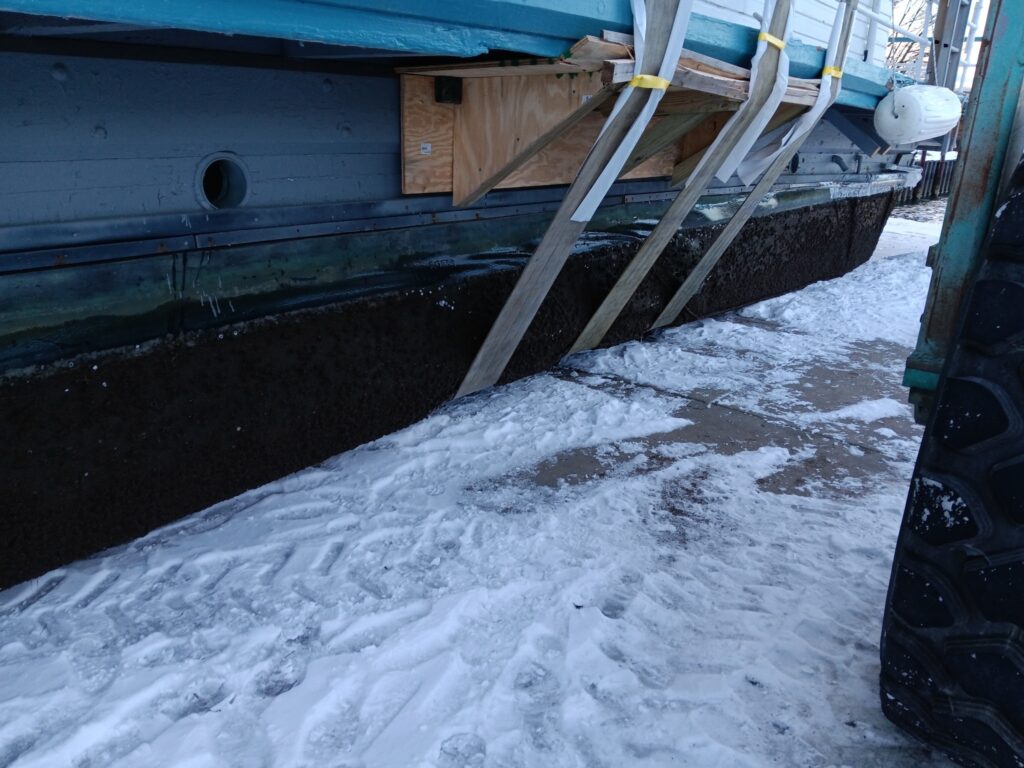
When Tracey told Georgetown about some of her ideas for getting the barge out of the water and restore her hull, Price added his team’s own ideas. With Georgetown Yacht Haven committed to the project, Tracey needed to get the houseboat there. Since TowboatUS is limited in the size of the recreational vessels they can tow, Tracey turned to a tugboat, which transported Lone Star just before Christmas. She says, “The tug alone was nerve wracking. The Bay was one big fog bank [that day]. Ships’ horns were blaring all the way up, the whole 45 miles [to Georgetown].”
Once the houseboat arrived safely to the Sassafras, the first thing Price’s team did was to inspect the vessel, making sure they could complete the lift without damage. Price was pleased to find the barge framed with huge, 14″ by 14″ timbers. It was solidly built.
The crew fashioned chine blocks from the hull out to the walkways to make sure the walkways didn’t snap off as the 110-ton Travelift hoisted the barge with its straps. The lift was successful, and Georgetown had to slowly, carefully back the large rectangle into its spot on land.
The boatyard custom-built the barge’s “resting place”, log cabin style, to cradle the hull perfectly, Price says. After cutting the rubber diaper away, assessing the rotting wood, the crew removed the tongue-and-groove shell of one-inch wood around the hull. Price paused the project for about a week to let the hull dry out—and then the polar vortex hit. To date, the team is still waiting for less extreme temperatures to take the next step.
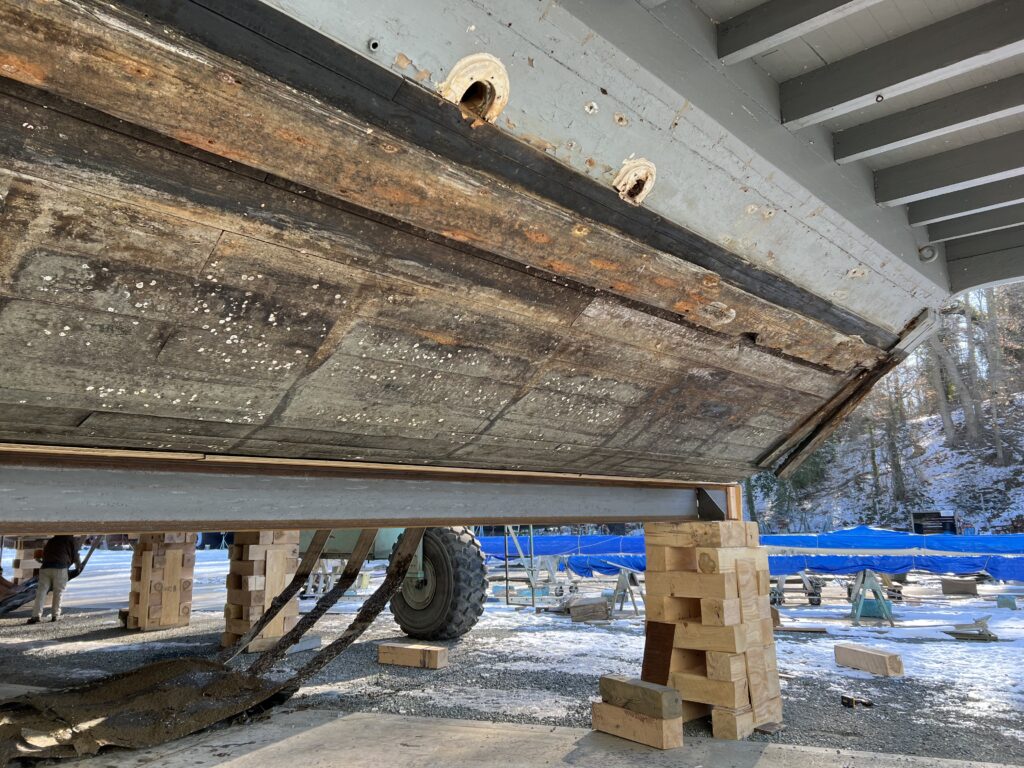
As Tracey says, “Every step is an adventure.” Now she’s mulling over the next step, or as she puts it, “What to cover the hull with that will last the next 50-100 years?”
She has explored different options and gotten all kinds of opinions: use a steel hull, wrap the existing hull with a high-density plastic product that comes in one-inch sheets, or encase it in fiberglass. Tracey suspects the fiberglass will win out.
Price is in favor of the fiberglass solution, but he says, “Ultimately it’s her boat and we want to do what’s best for it.”
The boatyard plans to shrinkwrap the barge all the way to the ground during the project, and expects that the hull can be completed in less than six months. Once it is sound and the houseboat is no longer a sinking risk, Tracey says they will continue improvements, like replacing deck surfaces.
When I ask Tracey about the cost of all this, she is undeterred. After all, what’s it worth to preserve four generations’ worth of Chesapeake Bay summers on the boat?

